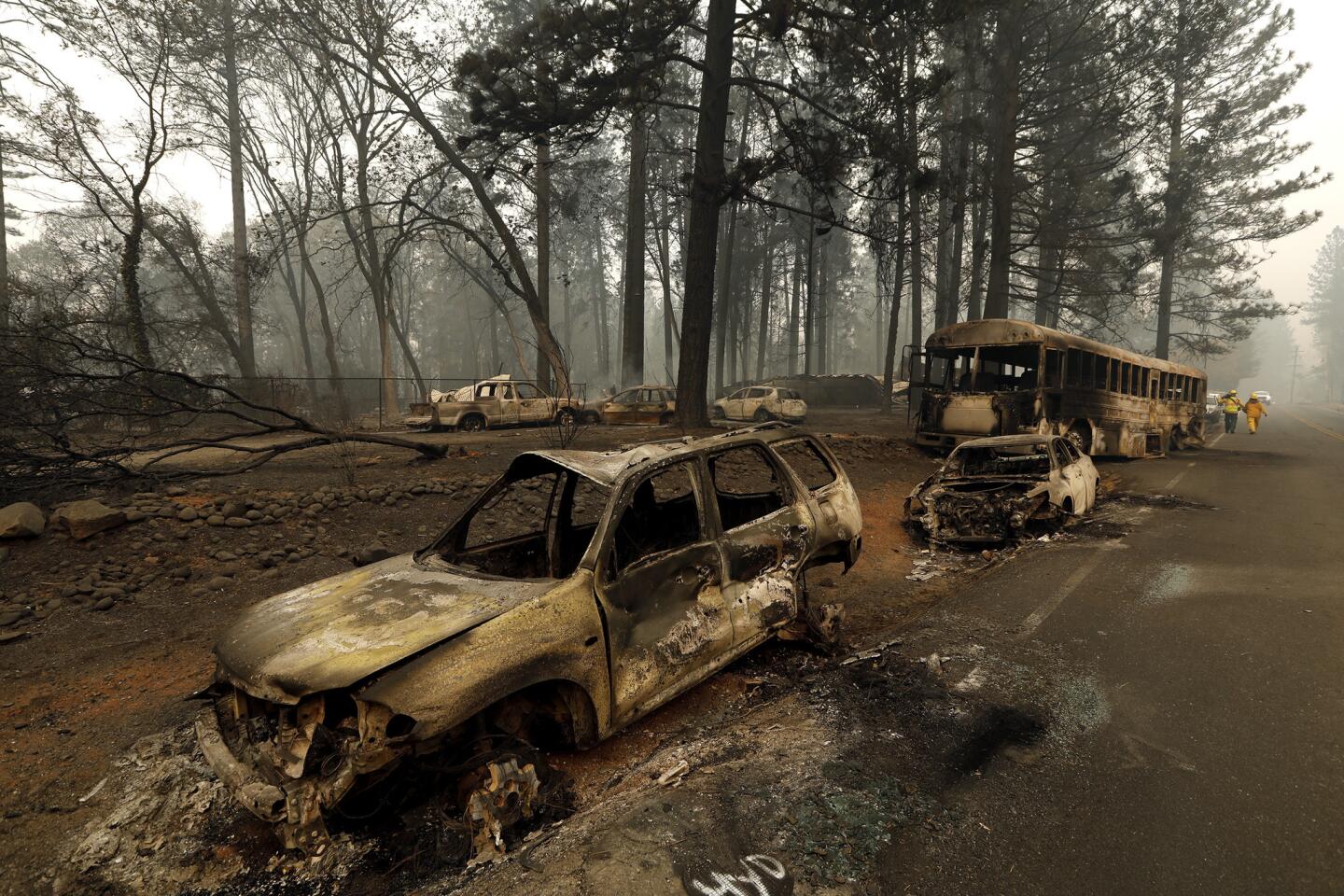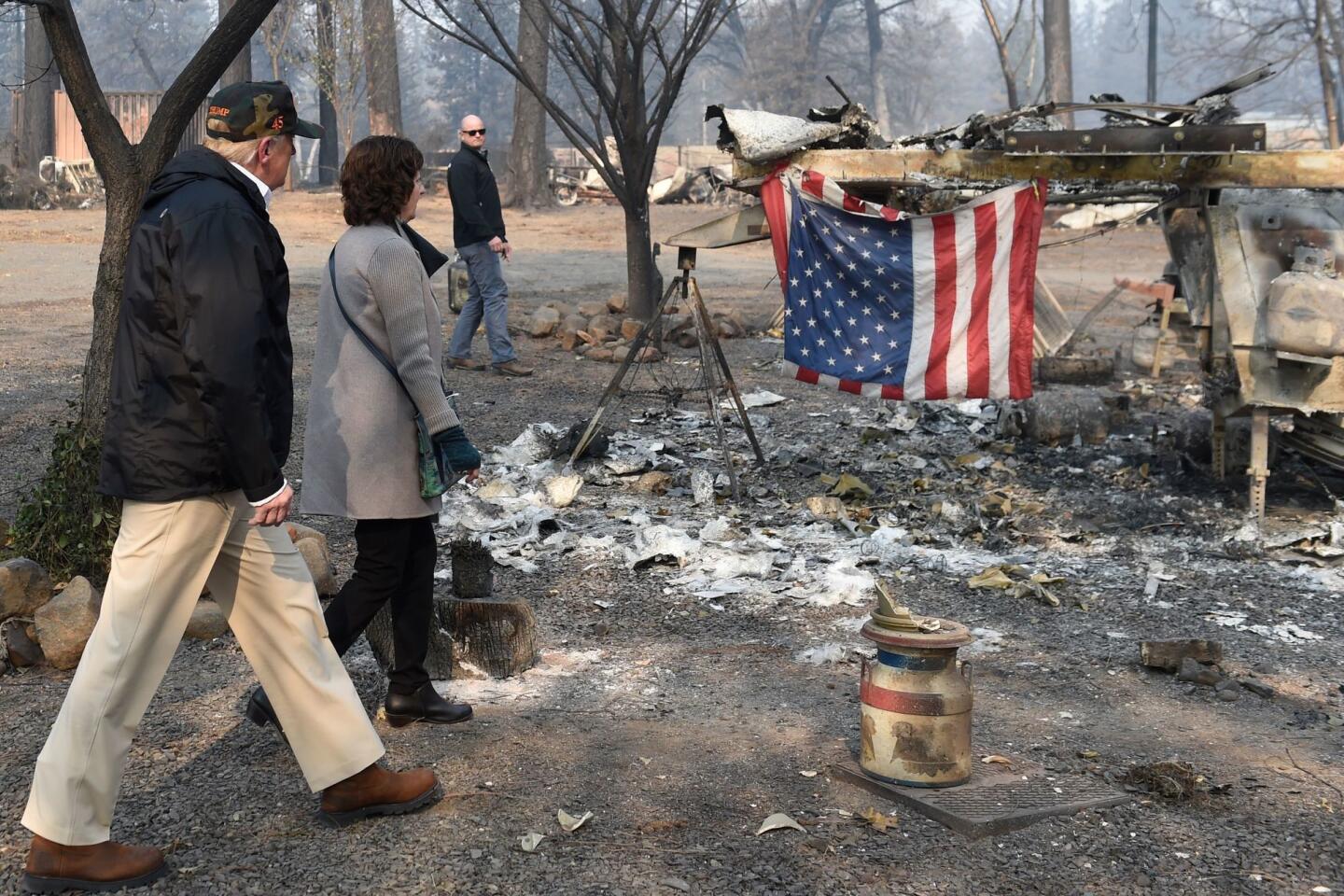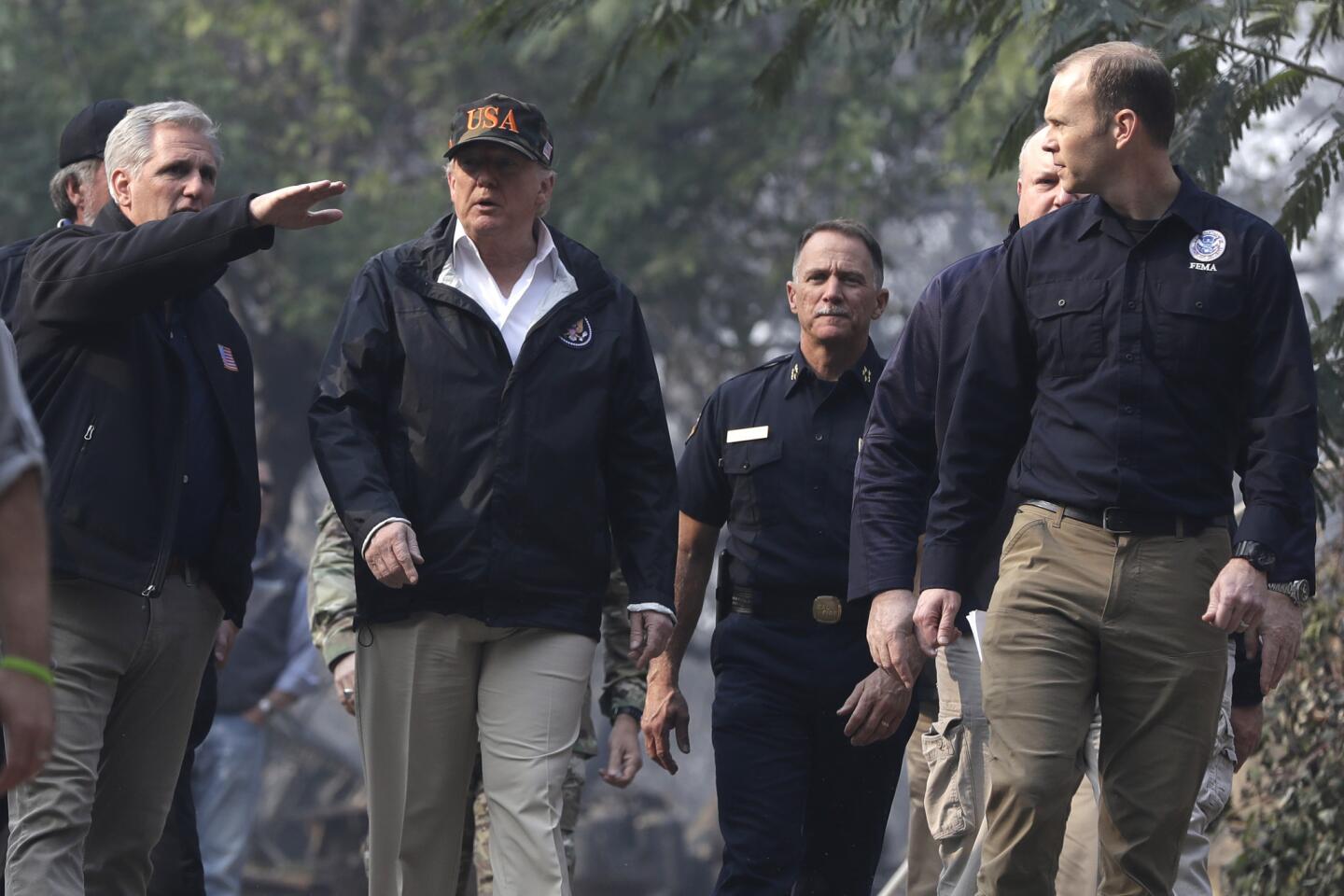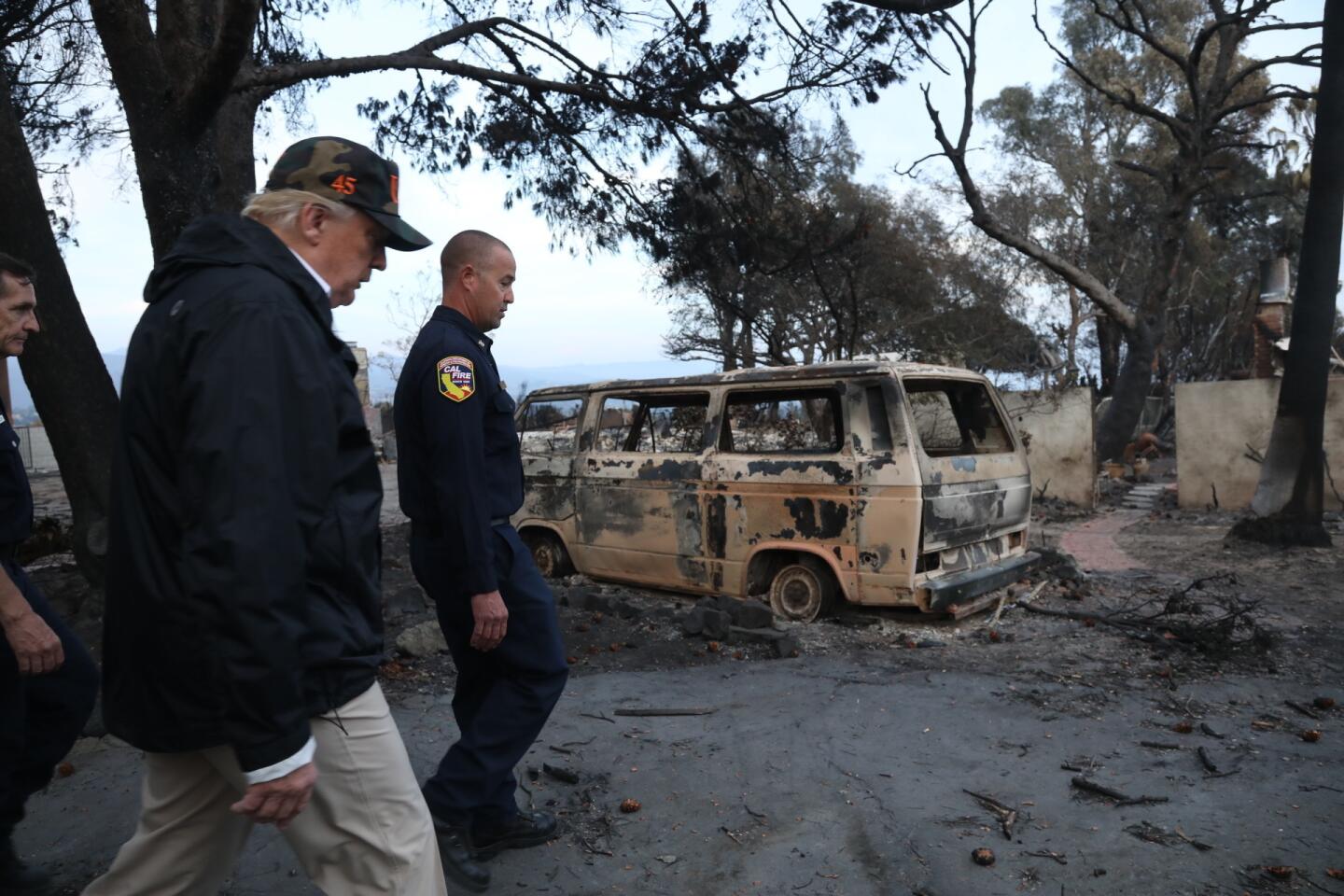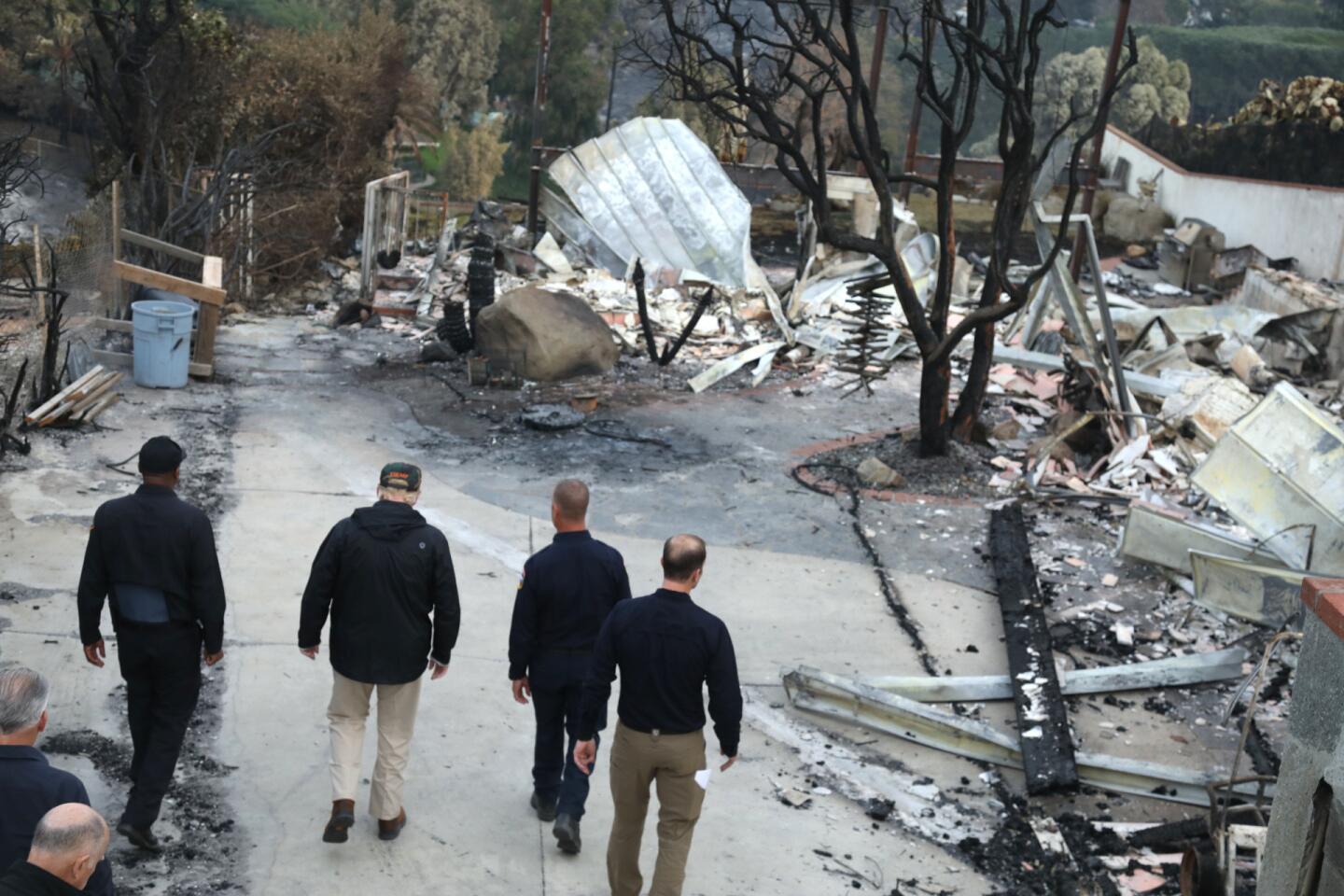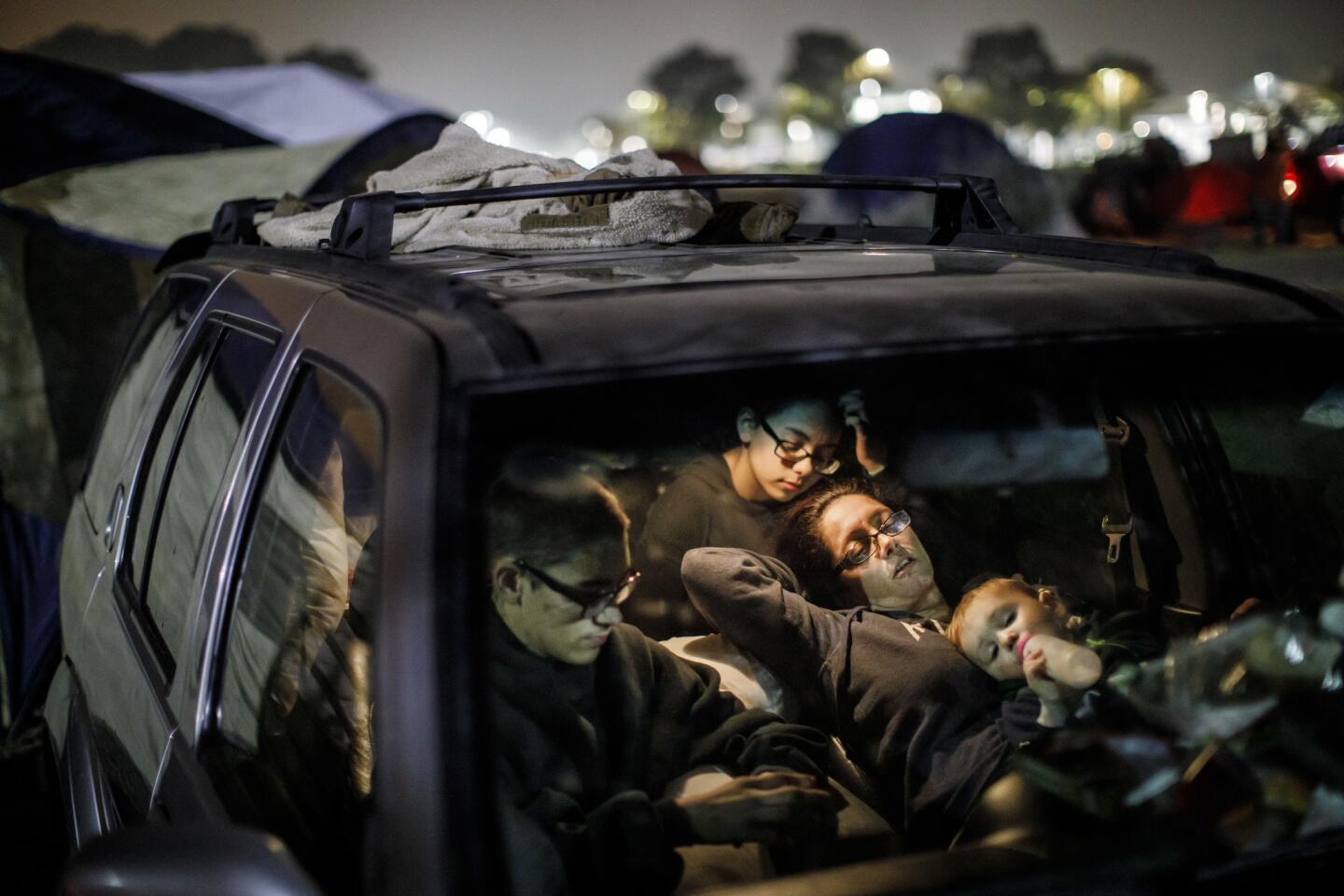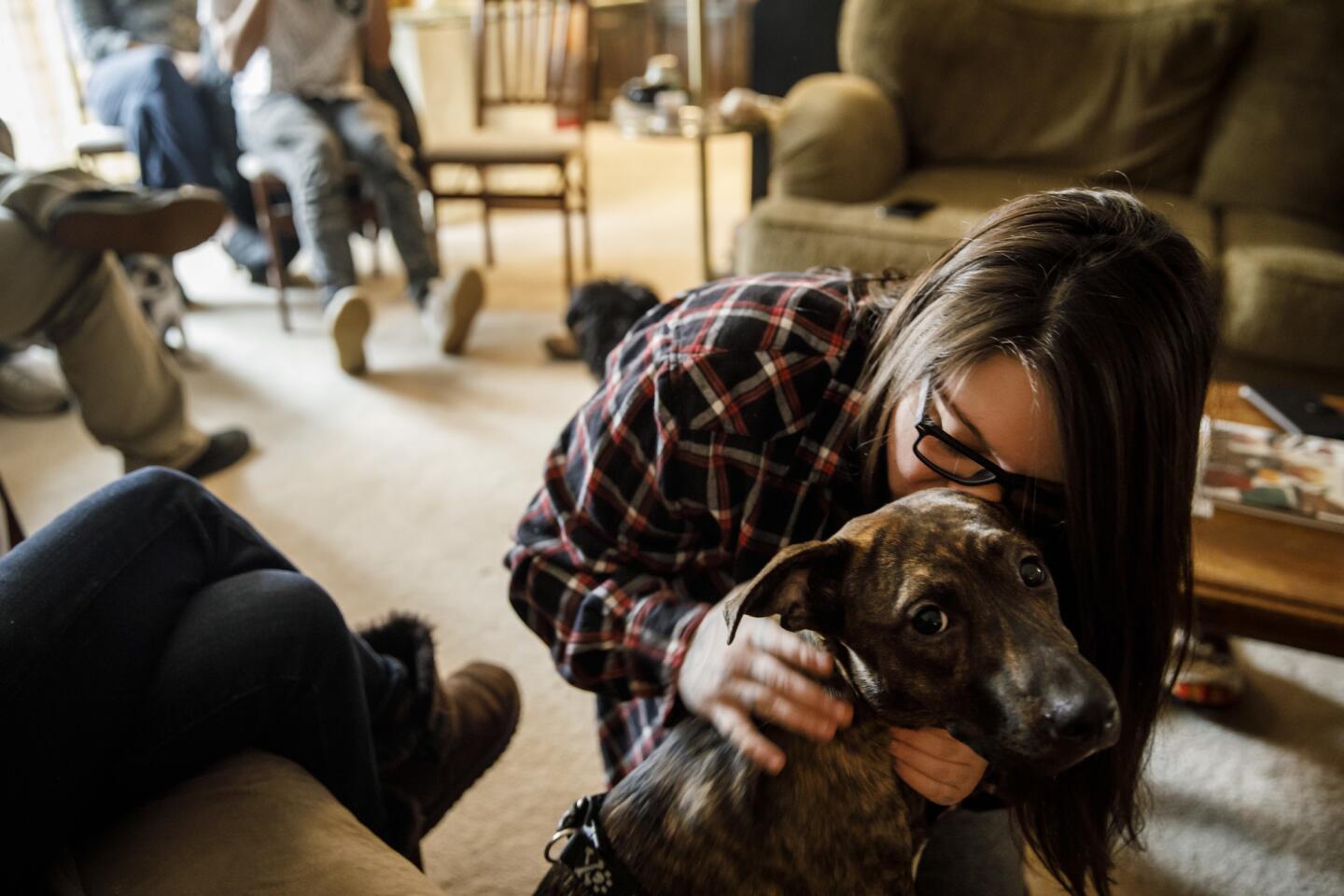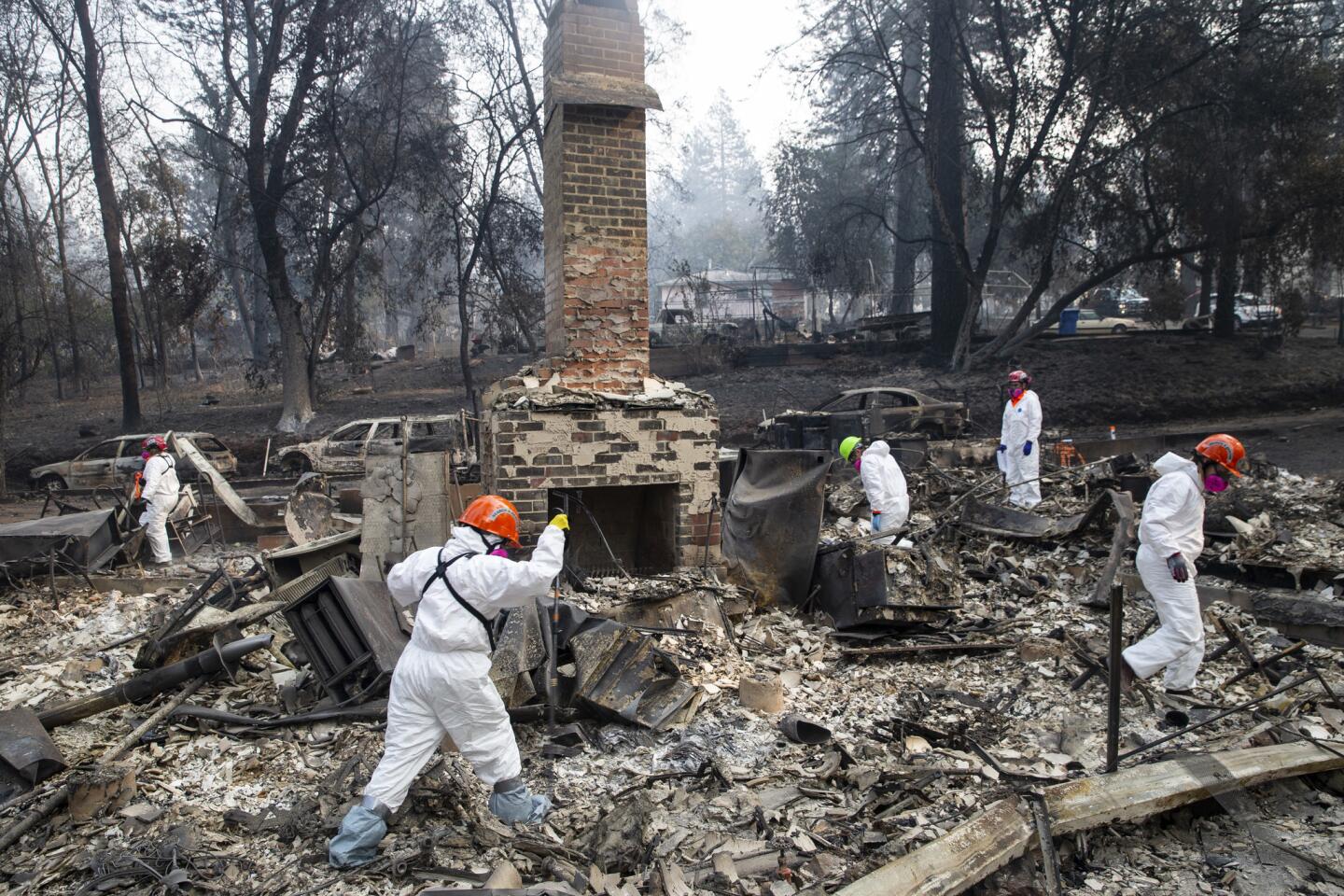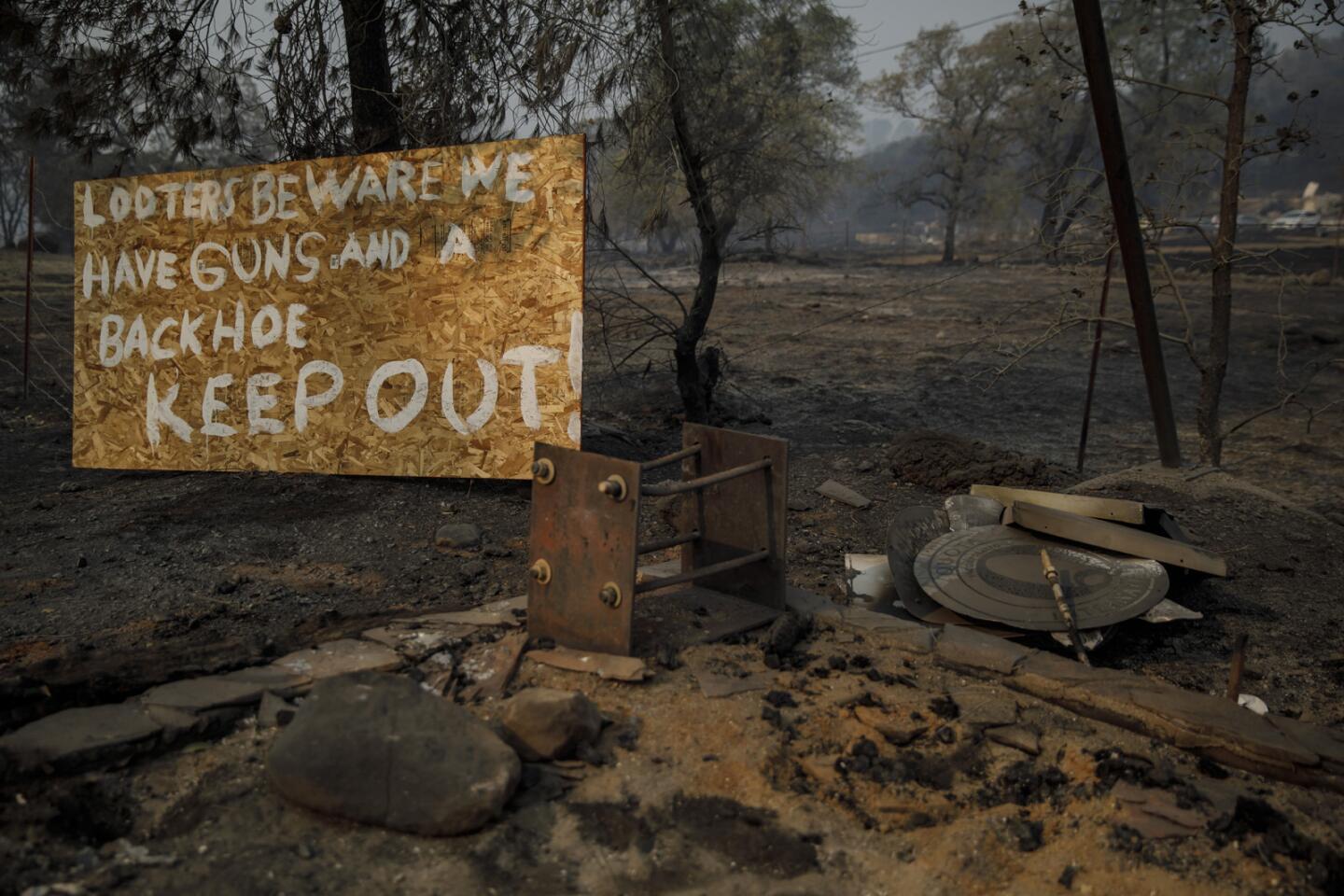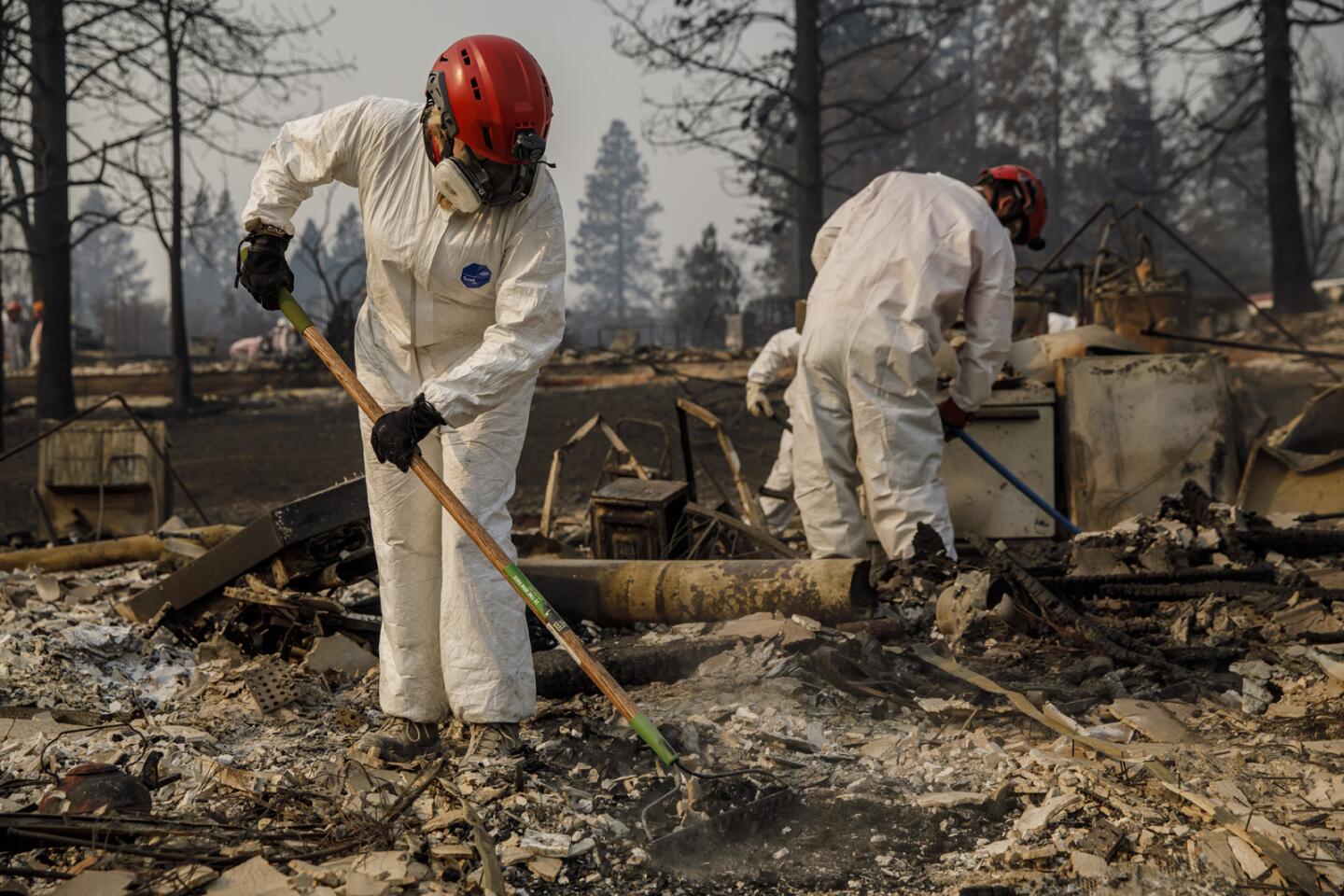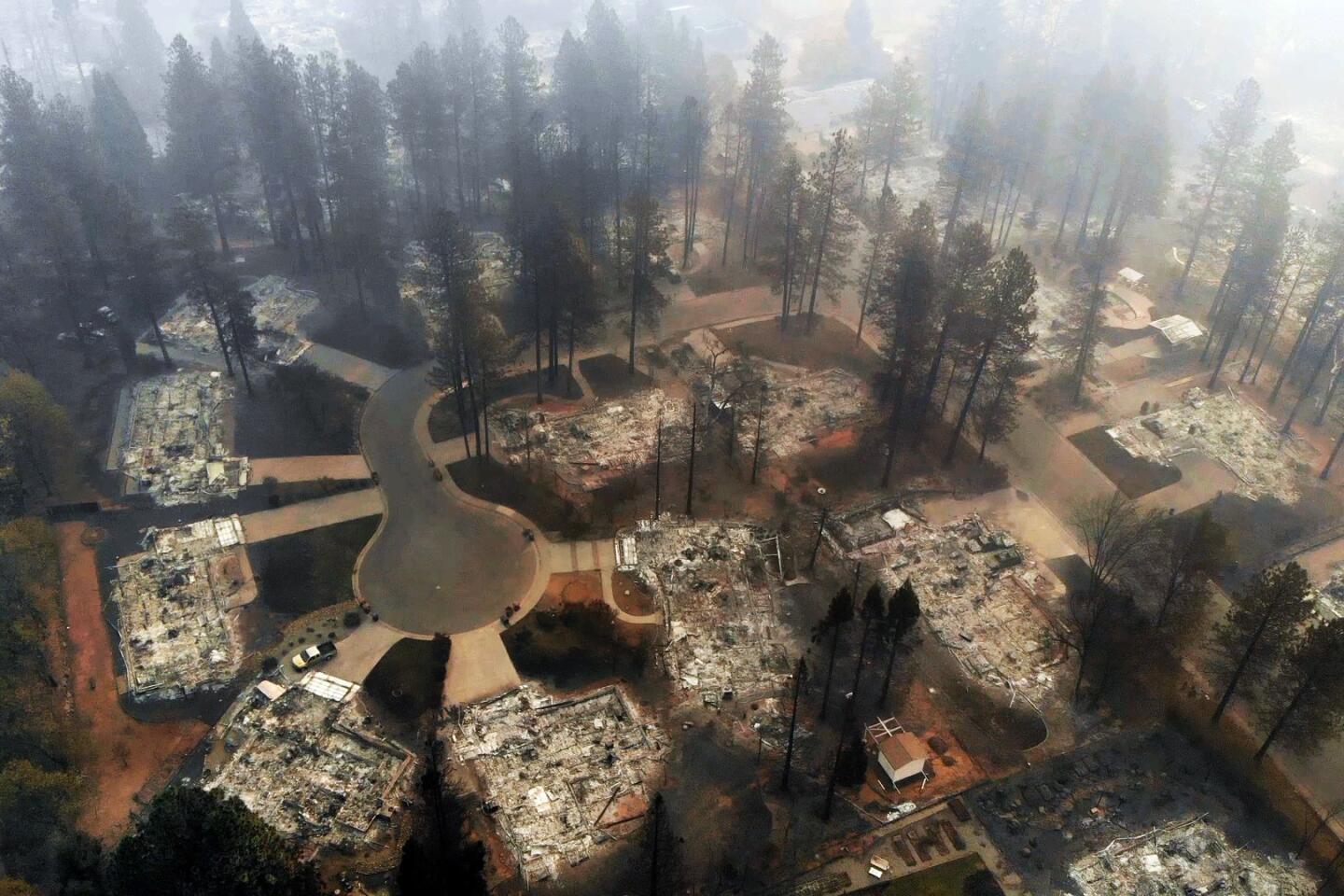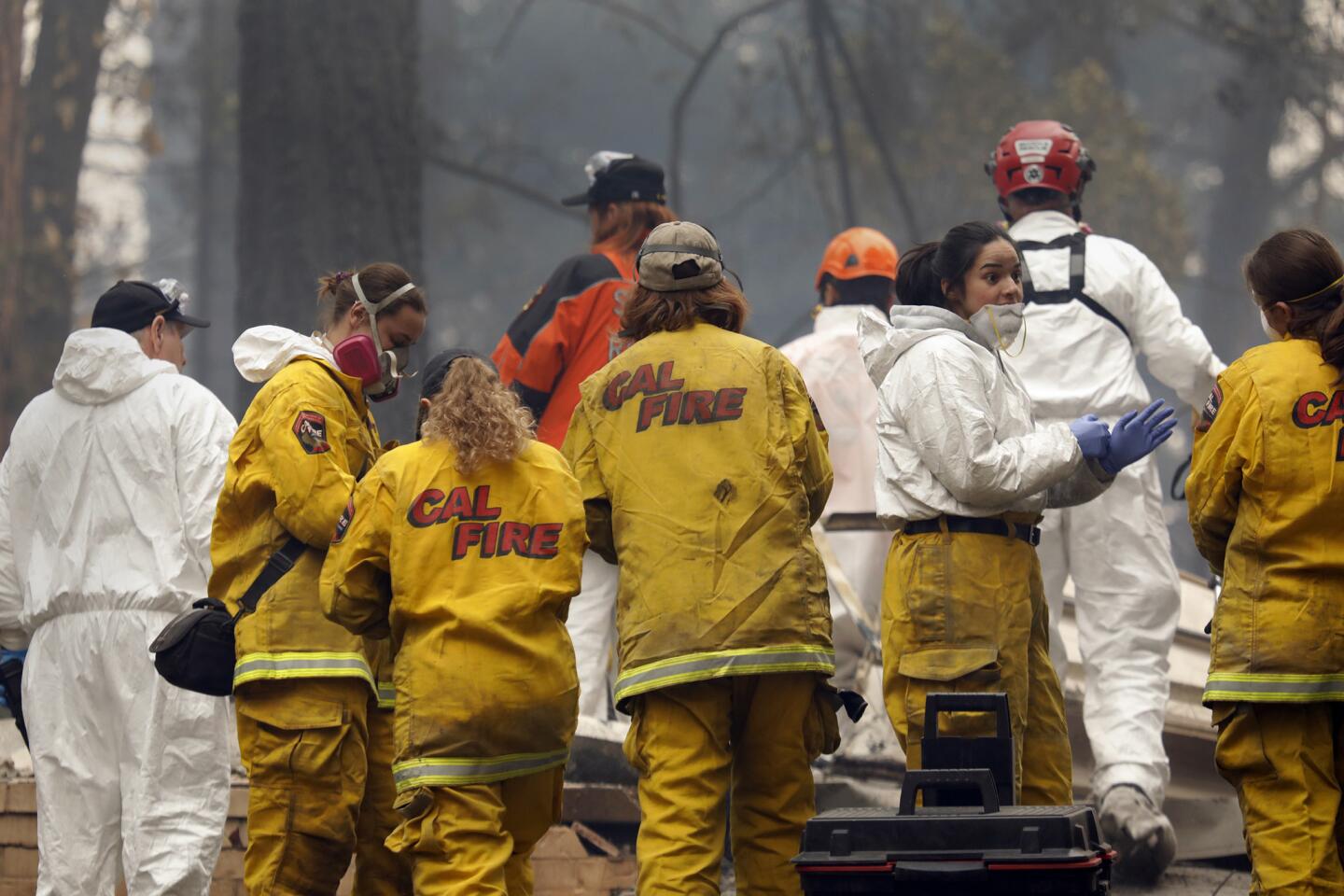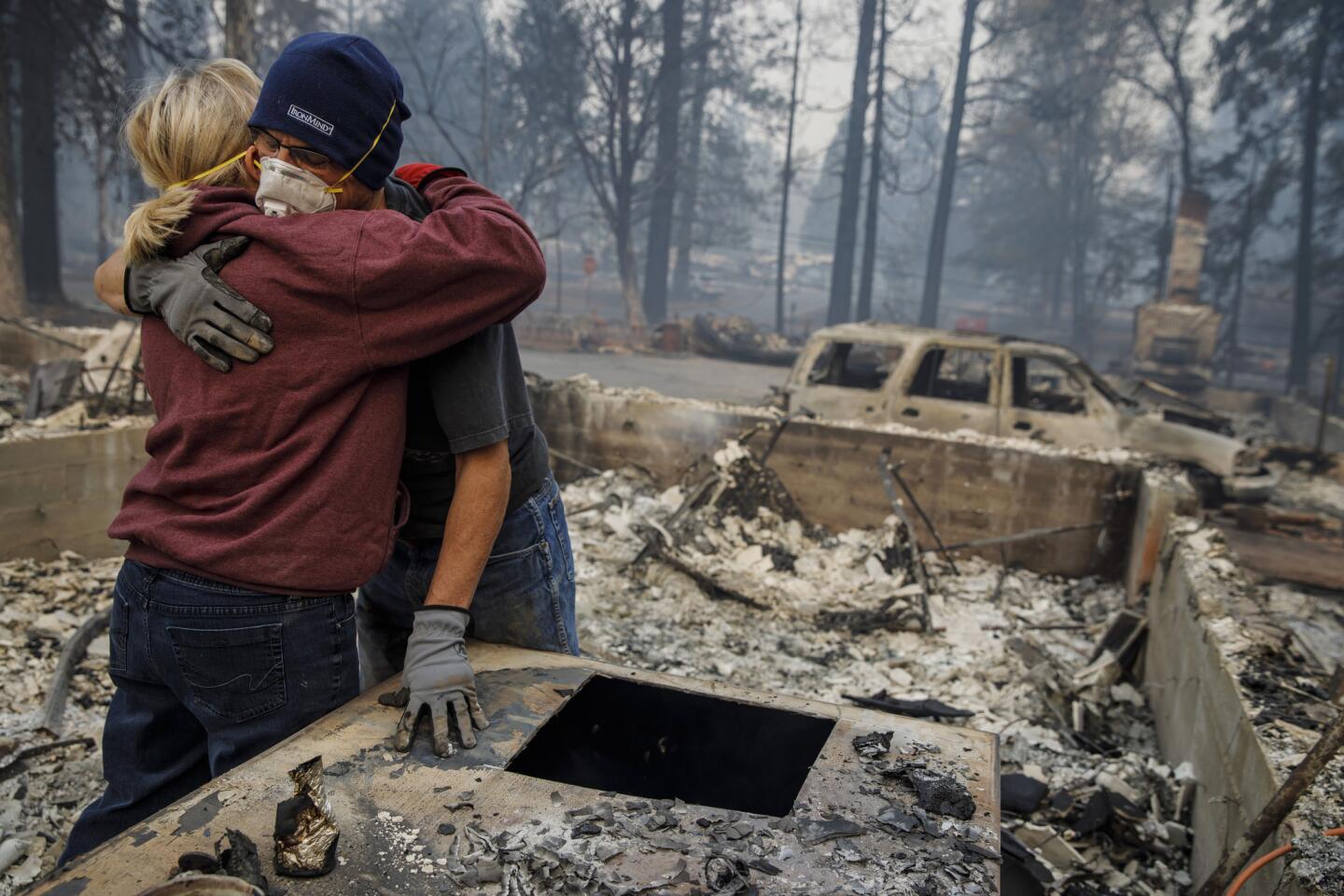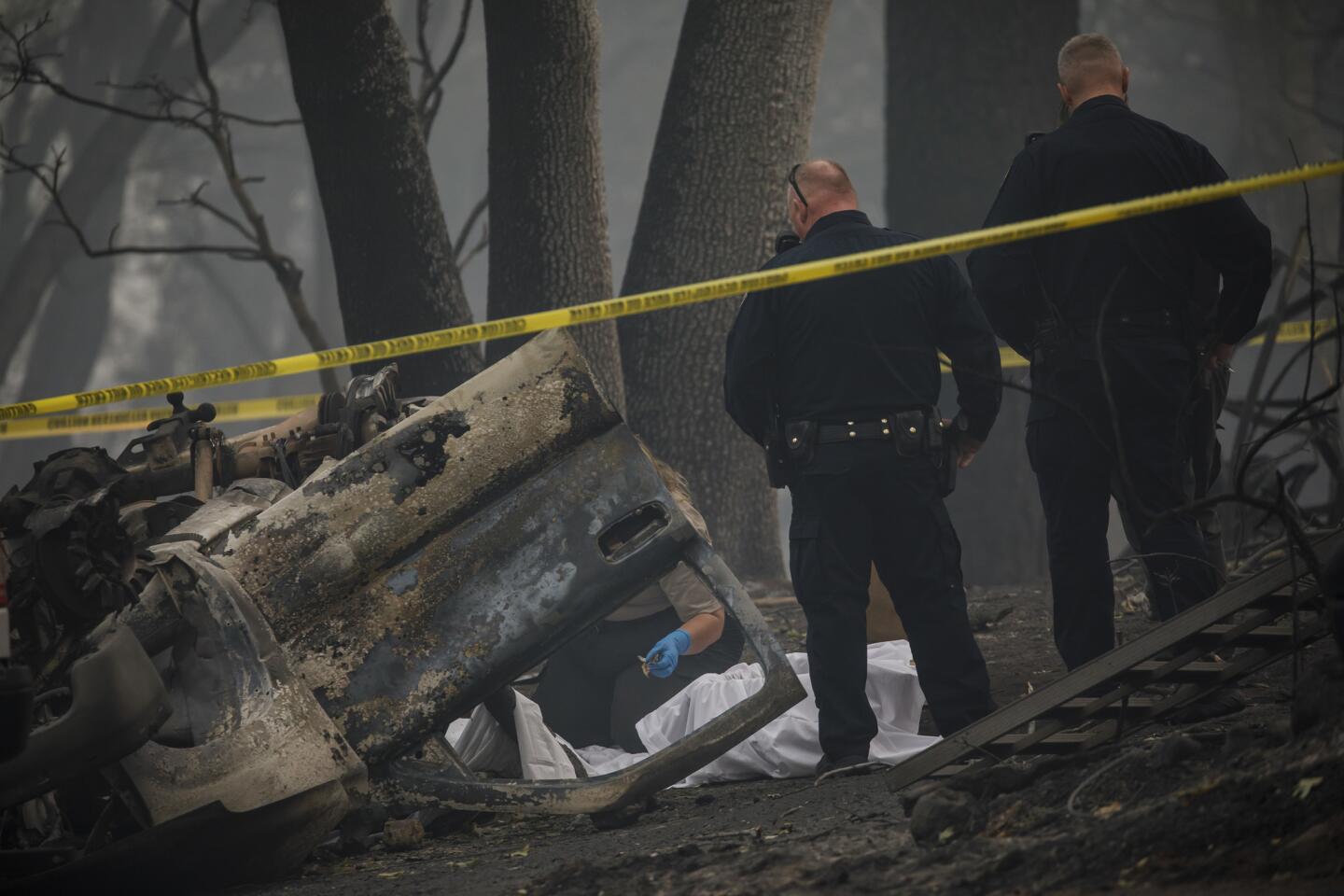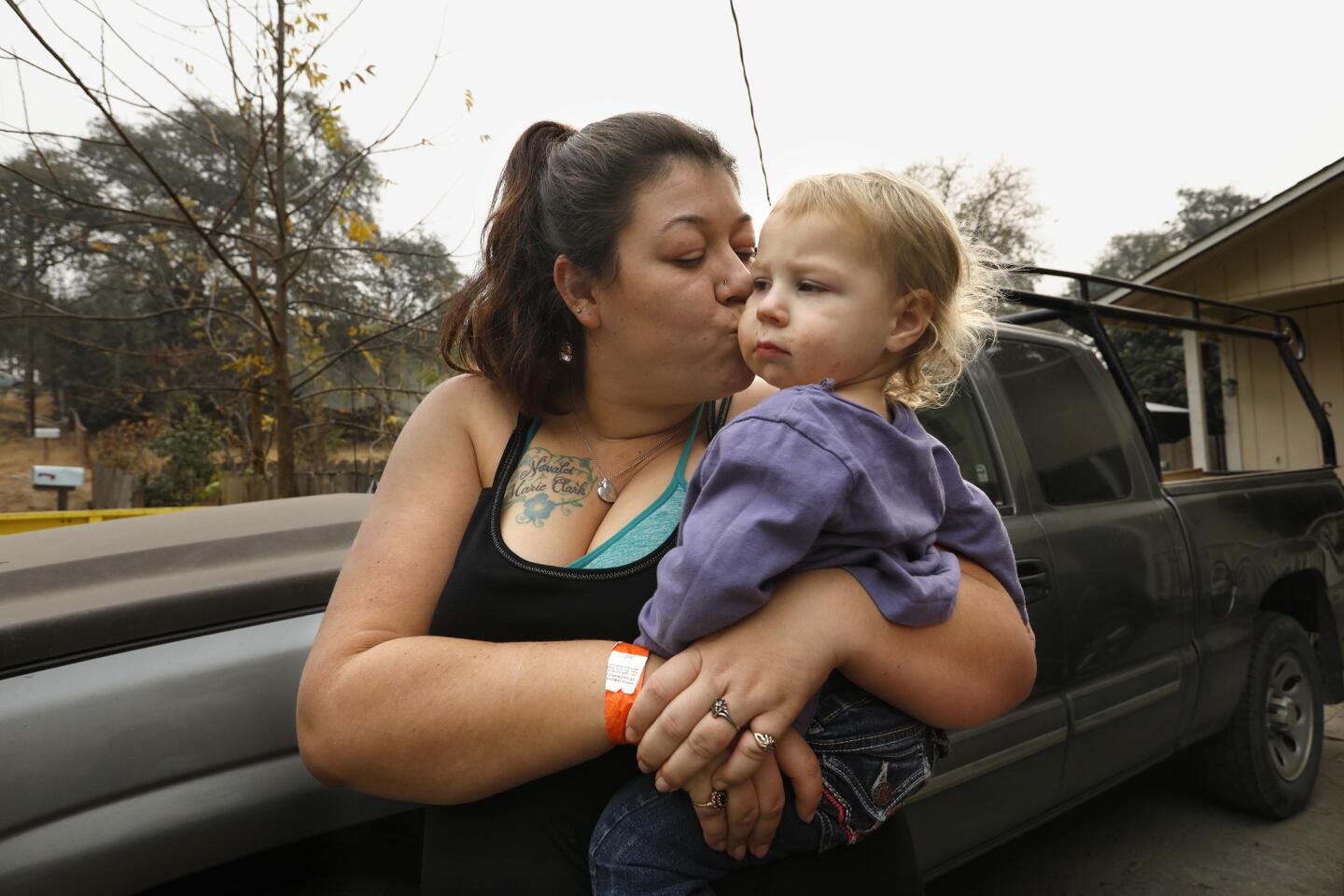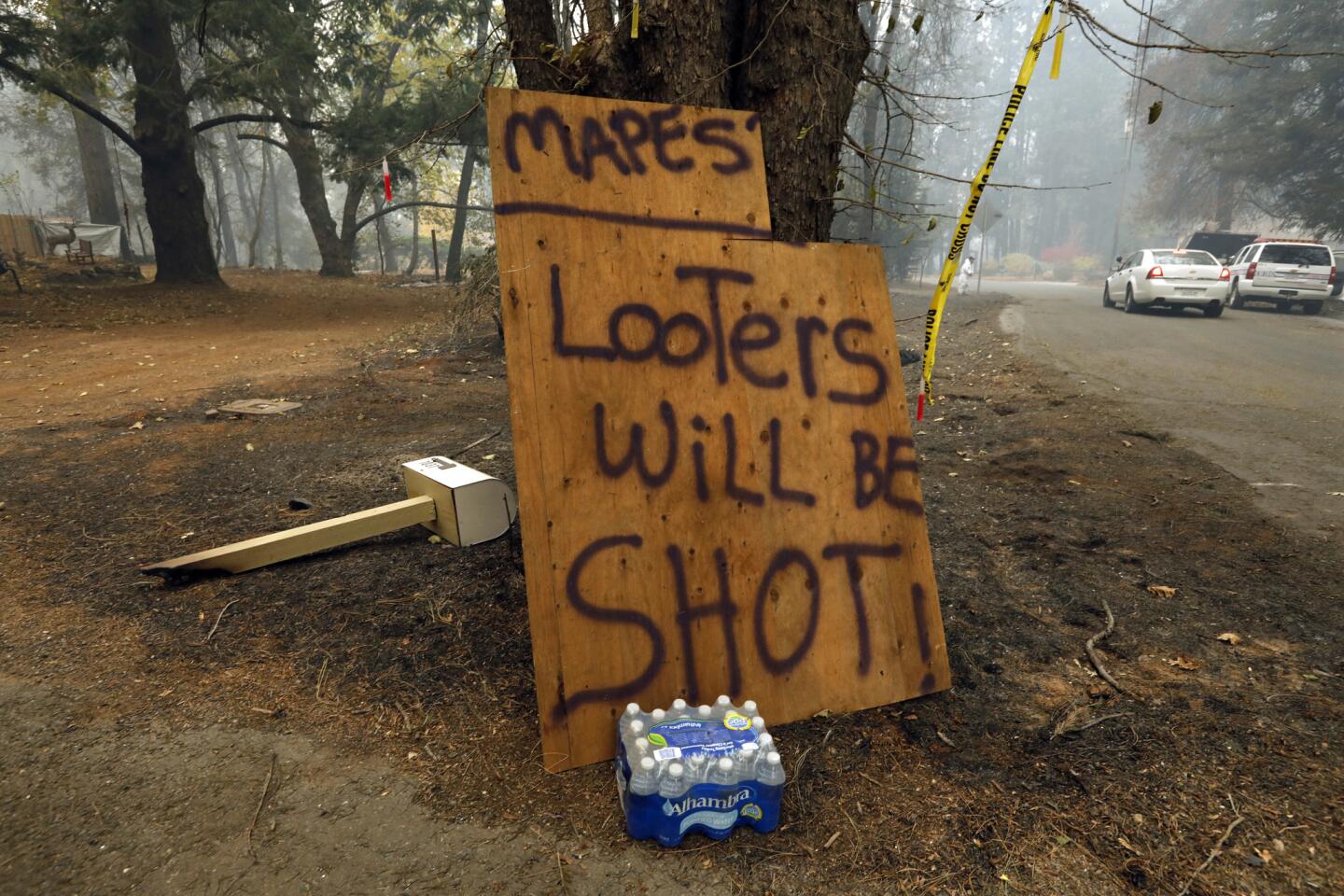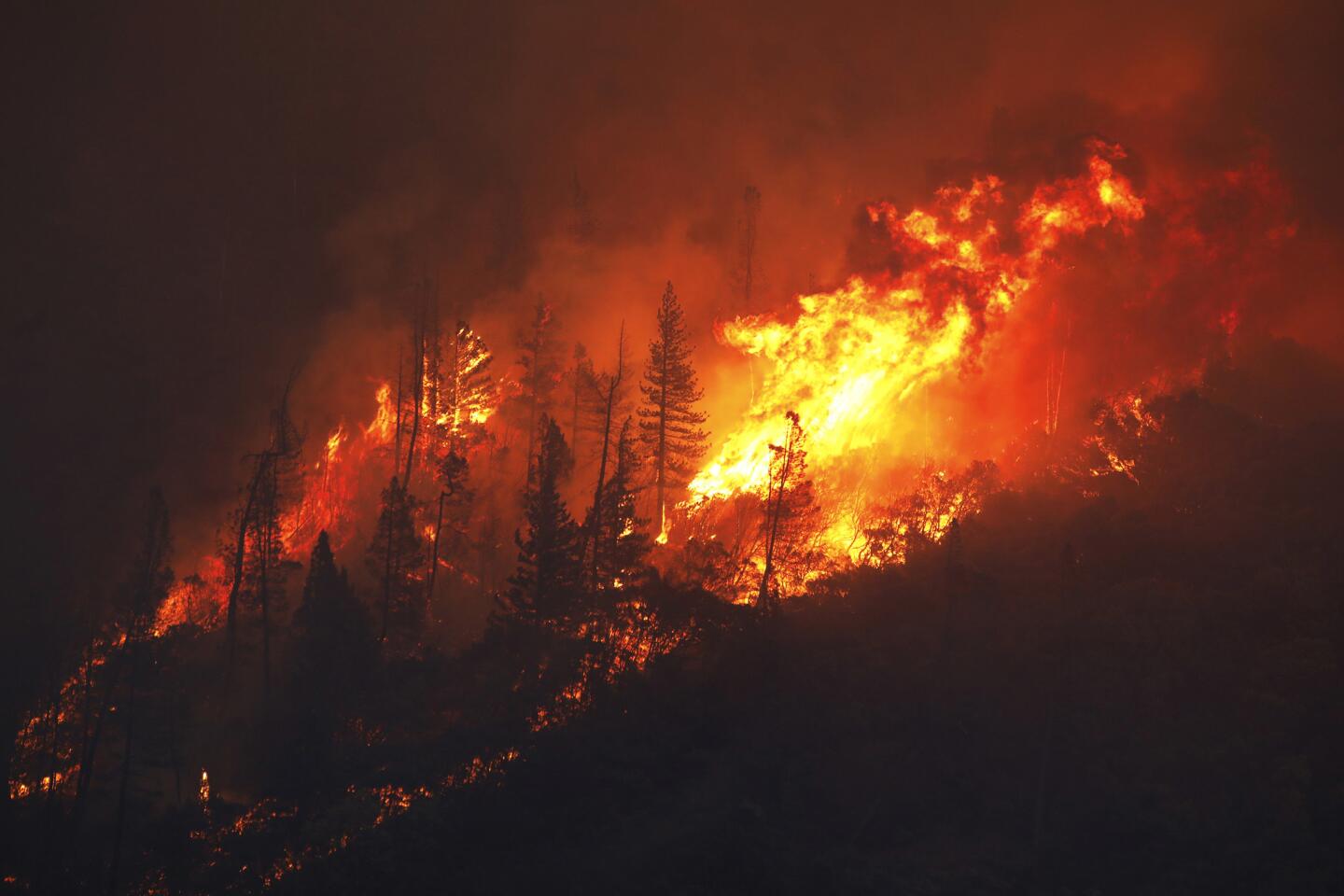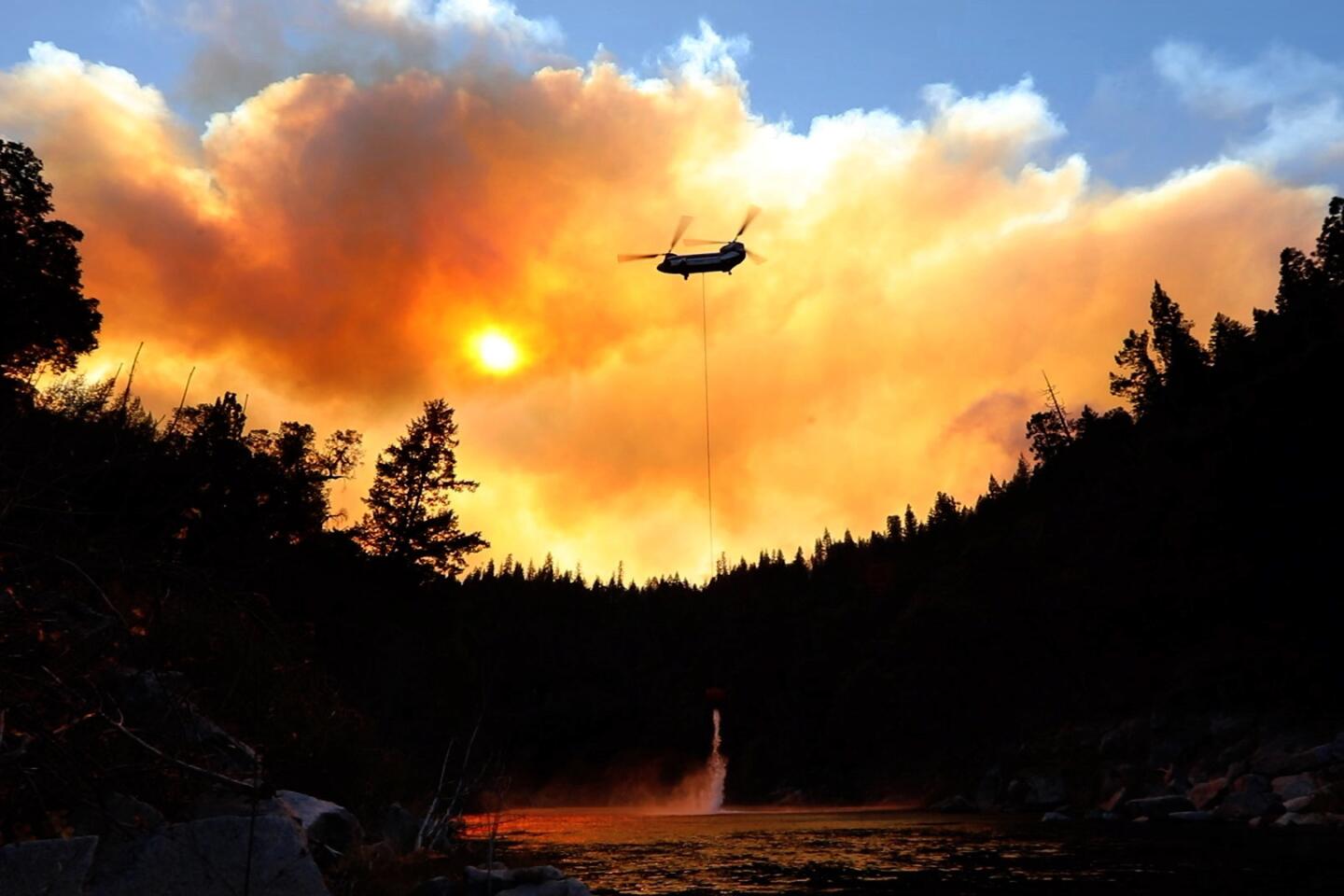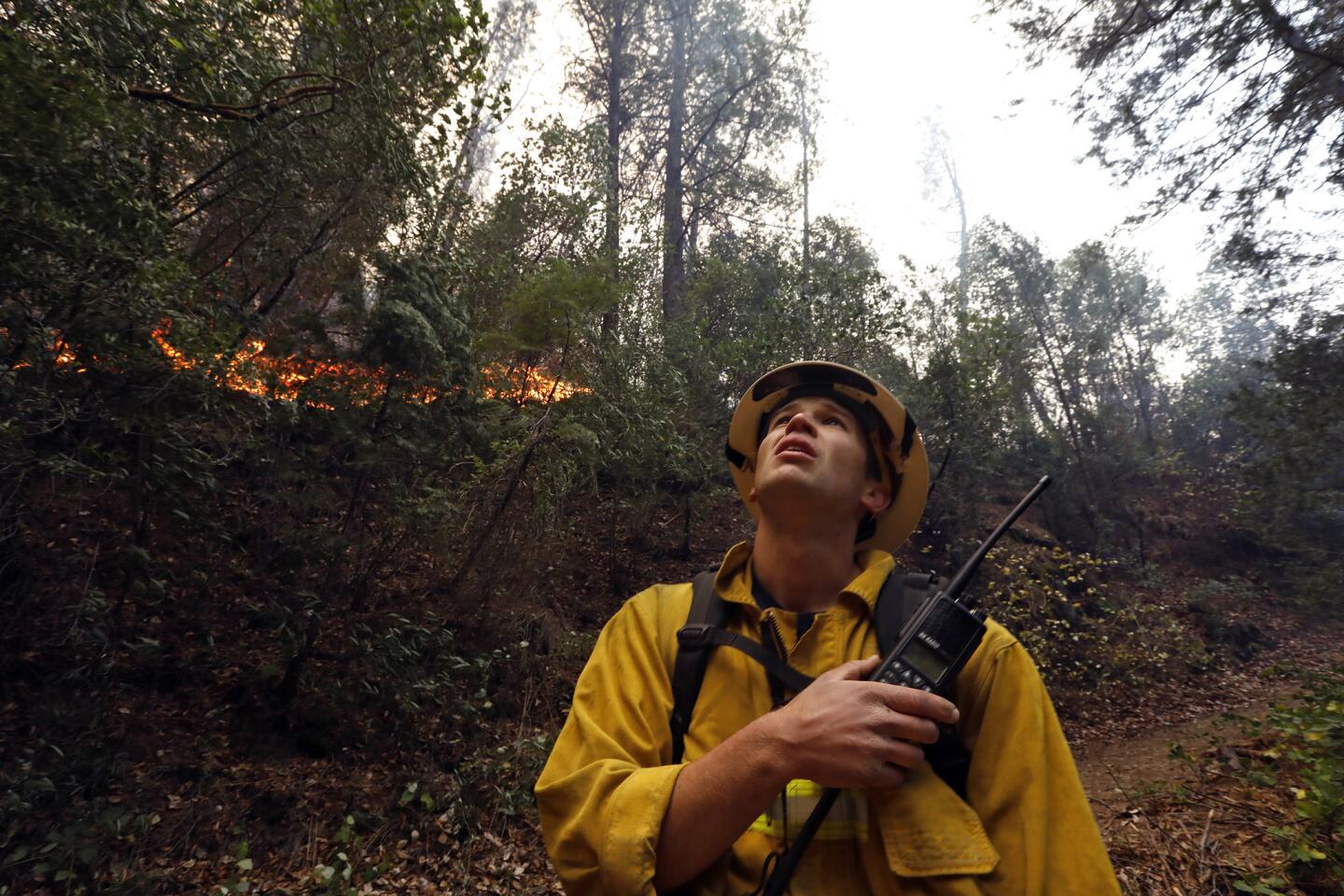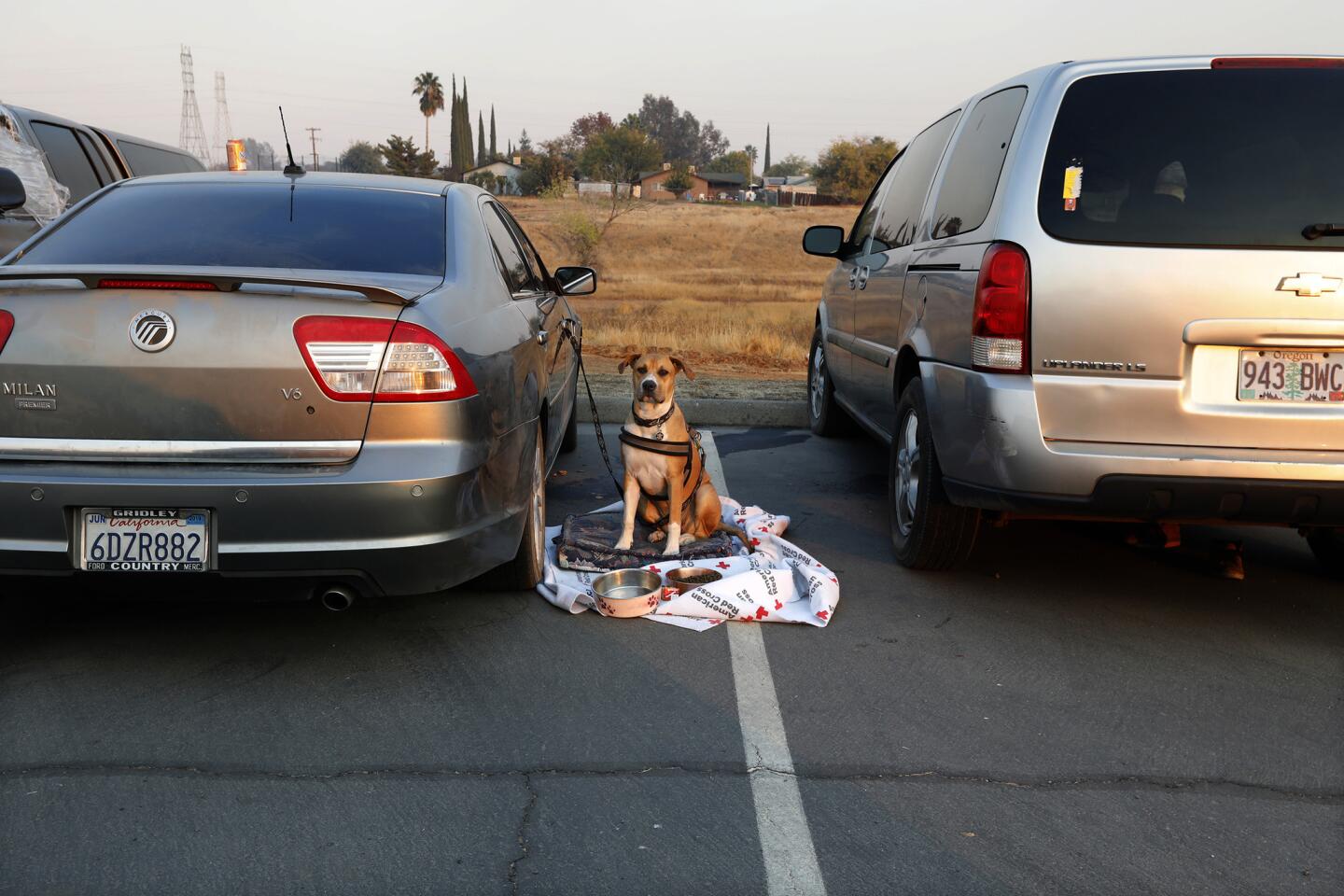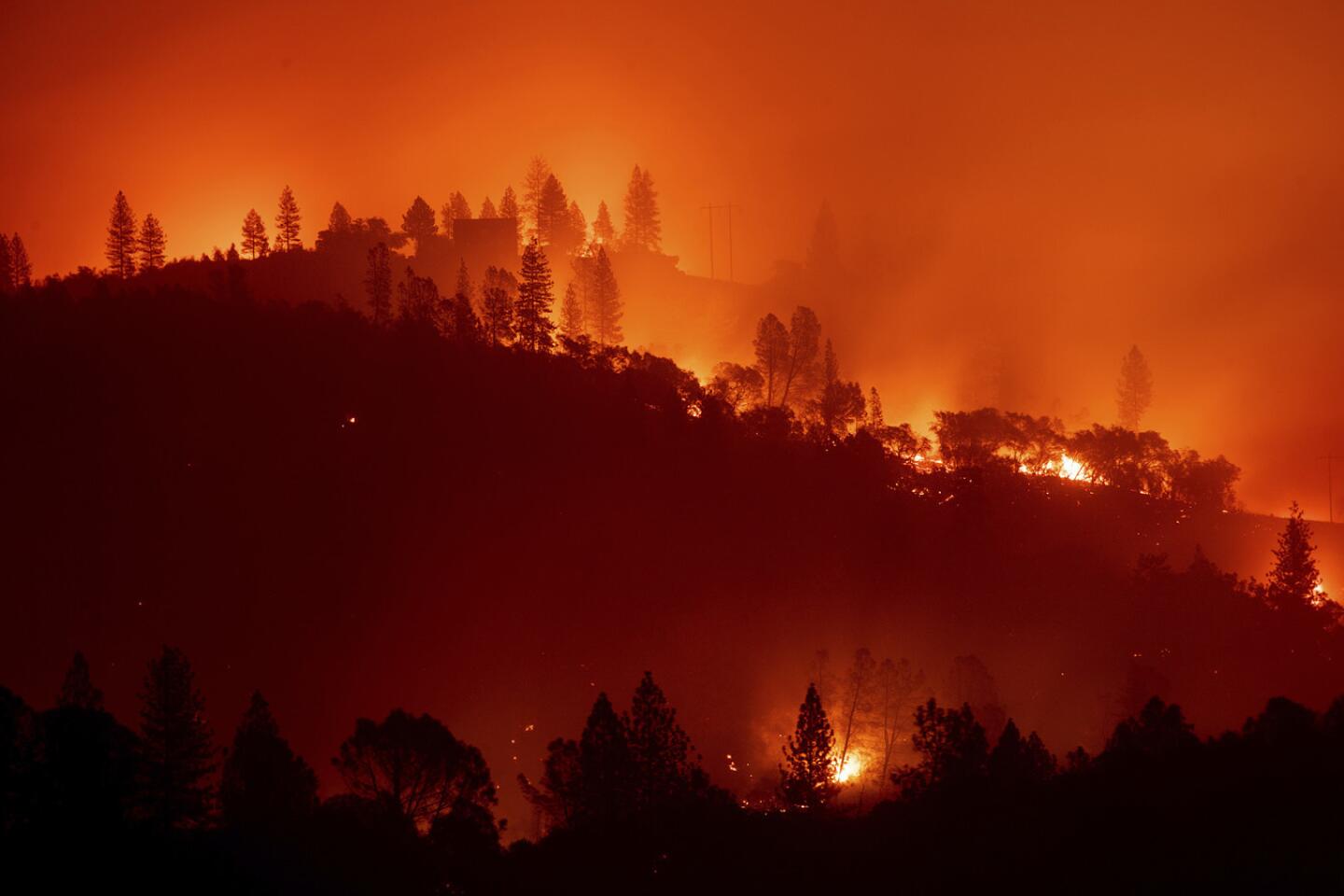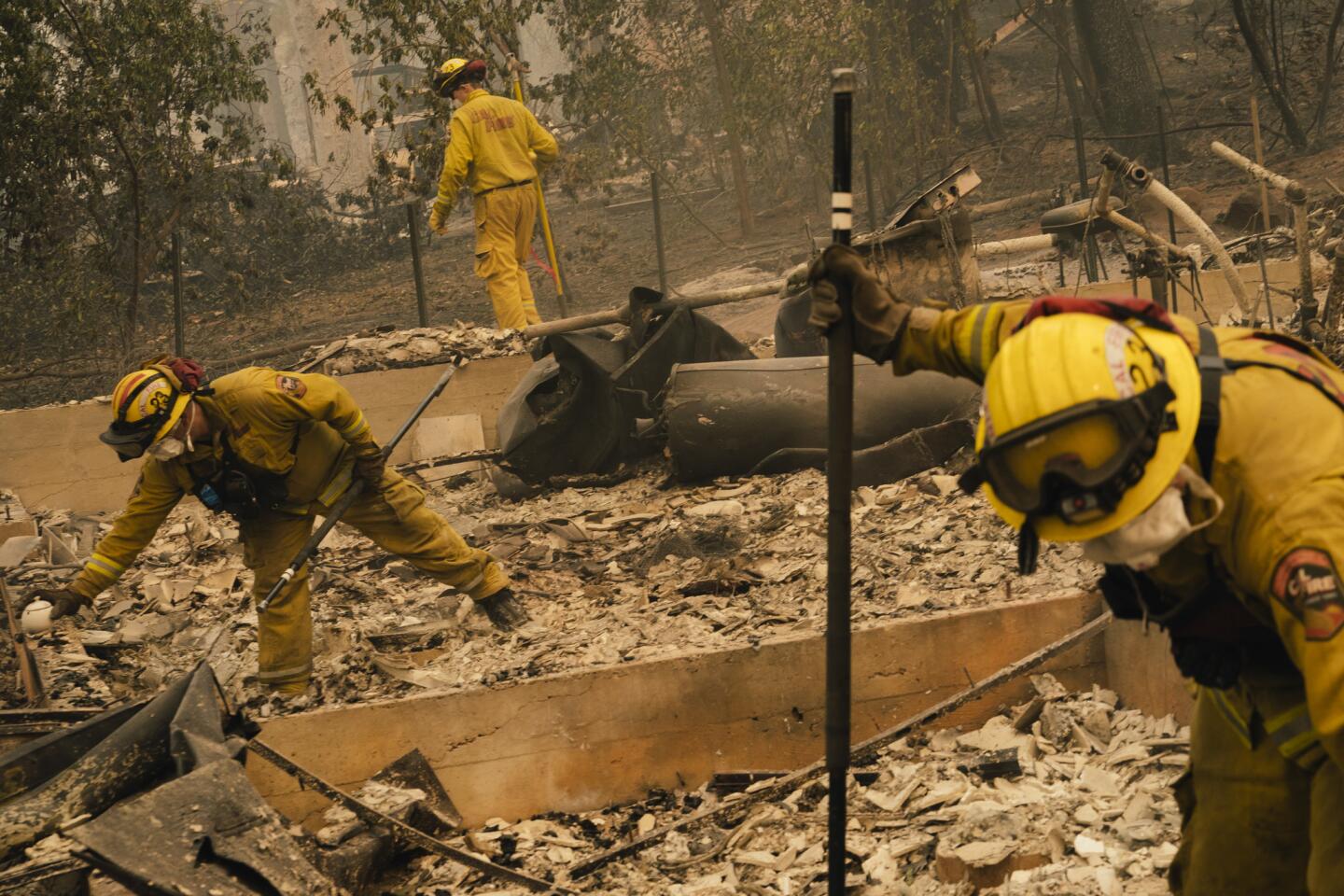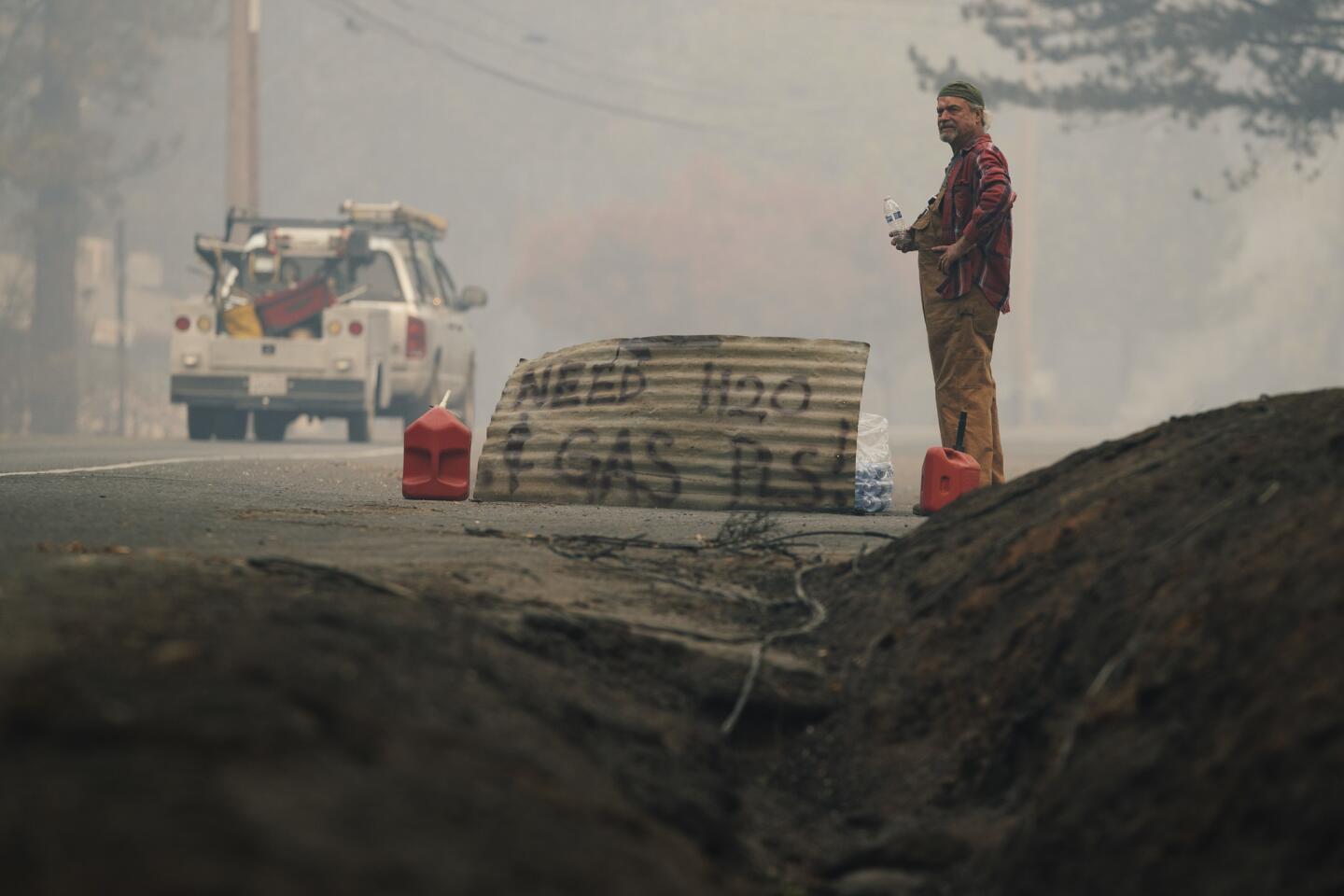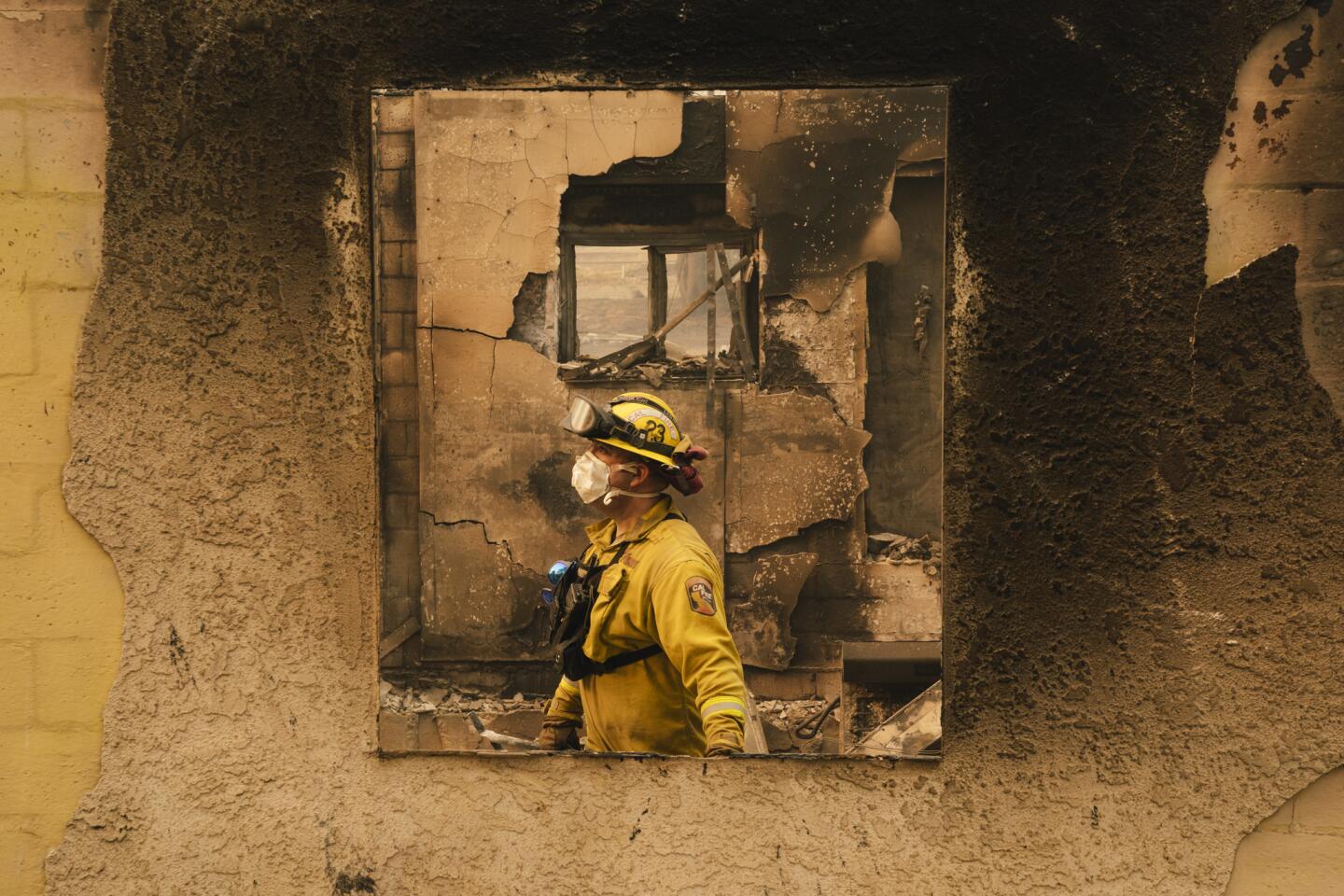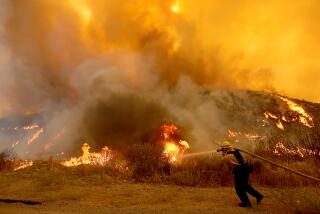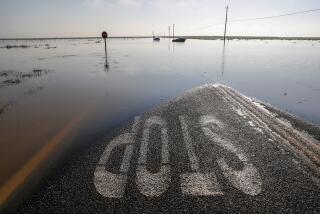Trump and Brown stir up rhetoric on wildfires but overlook pressing problems
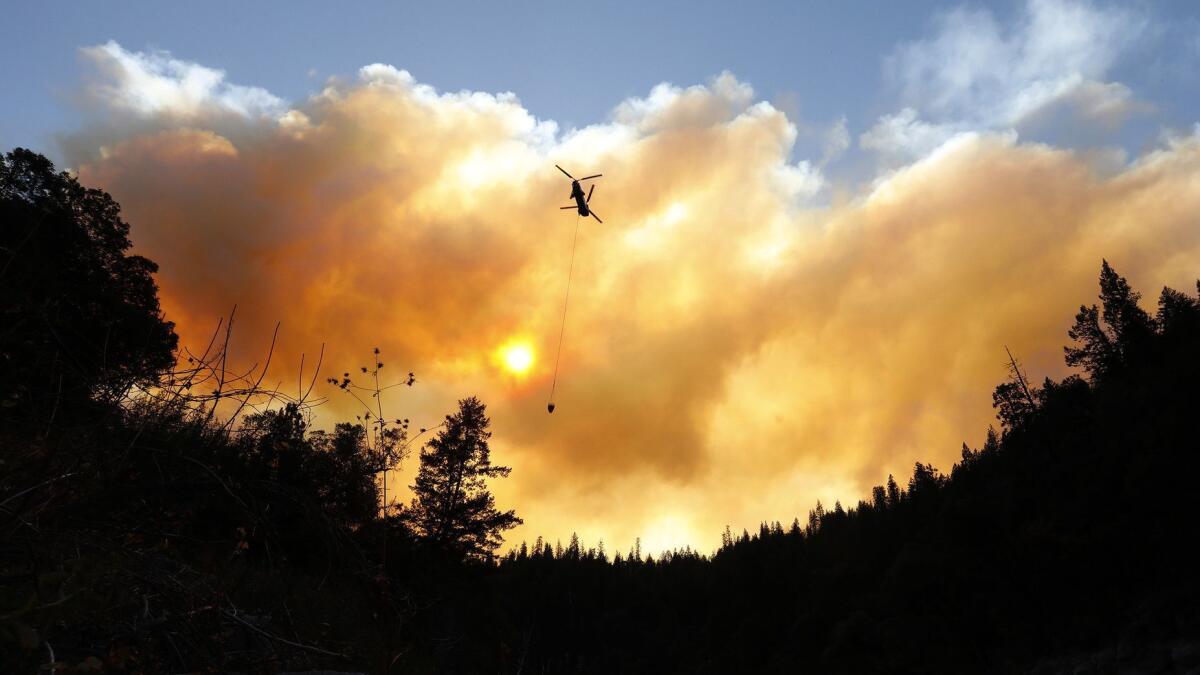
President Trump took to Twitter to blame bad forest management. Gov. Jerry Brown pointed to climate change.
Their arguments about the cause of disastrous wildfires roaring across the state have turned a California catastrophe into the latest political cudgel in the ongoing slugfest between Washington and Sacramento.
Both leaders are in a sense promoting their political agendas. In Trump’s case, that is an attack on environmental regulations. In Brown’s, it is a call to arms to slow global warming.
But as is often the case with political rhetoric, reality is far more complicated.
The Trump-Brown exchange ignores what many experts consider core reasons for fire’s escalating toll: Humans keep sparking them, and Californians keep building in high-fire zones prone to the fierce winds that inevitably drive the state’s most calamitous blazes.
In a tweet in the wee hours of Saturday, Trump framed a lack of logging as the sole cause.
“There is no reason for these massive, deadly and costly forest fires in California except that forest management is so poor,” Trump tweeted after the Camp fire — the deadliest wildfire in modern state history — leveled much of the Sierra Nevada foothills town of Paradise.
“Billions of dollars are given each year, with so many lives lost, all because of gross mismanagement of the forests. Remedy now, or no more Fed payments!” Trump declared.
California fires live updates »
The next day, Brown called the firestorms that have flared from Paradise to Malibu the “new abnormal” that threaten Californians’ way of life.
“Managing all the forests everywhere we can, does not stop climate change,” Brown said. “And those who deny that definitely are contributing to the tragedies that we are witnessing and will continue to witness.”
Char Miller, director of environmental analysis at Pomona College, sees the comments “as a conversation between two pit bulls.”
“What we’ve got” from Trump is that “forest management is bad and California is suffering and that serves them right,” Miller said. “And Brown goes for … the higher ground — if we’re thinking of climatic issues — but it doesn’t actually solve anything on the ground.”
What’s missing in this politicization of wildfire, Miller said, is a vital question. “Why is it that at the county, city, town level, we have repeatedly green-lit development in areas that we know are fire zones?
“Whether it is to allow a rock star to build on a ridgeline in Malibu or a manufactured-home community that nestles into the foothills, the decision is the same and the consequences are the same. People who have been routed out of their houses have lost their possessions, and many people have lost their lives.”
This is not the first time Western wildfires have became a political football. President George W. Bush’s administration pushed more commercial logging in national forests after huge wildfires erupted in federal forests in the West in the early 2000s.
But with his wildfire tweets, Trump is once again breaking old boundaries.
“I’ve been following these issues for 40 years, and I don’t remember a time when the issue of wildfire has ever been politicized anywhere close to the extent it is now,” said Richard Frank, director of the California Environmental Law and Policy Center at UC Davis.
“Trump’s tweets and comments on the subject are completely uninformed,” he said. “To attempt to make political points in the middle of calamitous public disasters of wildfires of the type and extent we’ve never seen in recorded California history is not helpful, to say the least.”
Overgrown forests — the result of a century of fire suppression as well as past logging that cleared the way for dense young stands of trees — pose a heightened wildfire threat in some parts of the Sierra Nevada.
But that has not played a role in the string of wildfires that is exacting a horrific toll on life and property in California.
The conflagrations have mostly seared oak woodlands, chaparral and grass. Although Paradise is near forestland, the wind-whipped Camp fire tore across areas that burned in 2008 lightning fires and were also later logged. It is not fueled by heavy timber.
At the same time, fire scientists say Brown’s emphasis on climate change is too narrow.
“The way I think most scientists see it is that climate change is exacerbating this situation. It’s making it worse. But it is by no means the primary cause,” said Jon Keeley, a fire ecologist with the U.S. Geological Survey.
In Southern California, he pointed to human-related ignitions and drought, which left masses of dead shrubs to fuel flames.
“What’s big in Southern California is whether or not somebody starts a fire during a Santa Ana wind event. And if they do it after seven years of drought, it’s way worse,” he said.
Track key details of the California wildfires »
The cause of the wind-driven Woolsey blaze that has scorched nearly 100,000 acres in the Santa Monica Mountains and incinerated more than 400 homes has not been determined. Nor has one been given for the Camp fire. But in both cases, anomalies with utility lines have been reported around the time flames were first spotted.
Keeley’s research found that from Sonoma County to San Diego, 99% of the wildfires in coastal California have human-related causes, whether that be downed power lines, sparking equipment or weed whacking during hot, windy weather.
The state should focus on where people build and reducing fire starts, particularly from downed power lines, Keeley said. “We need a fire zone where people are not allowed to build in areas that are hazardous,” he said.
Similarly, UC Berkeley fire scientist Scott Stephens said that although climate change is playing a role in wildfire growth, he worries that a focus on global warming can leave the public thinking that “there’s really nothing to be done.”
In fact, he said, “Communities could still be better prepared.”
More to Read
Start your day right
Sign up for Essential California for news, features and recommendations from the L.A. Times and beyond in your inbox six days a week.
You may occasionally receive promotional content from the Los Angeles Times.
